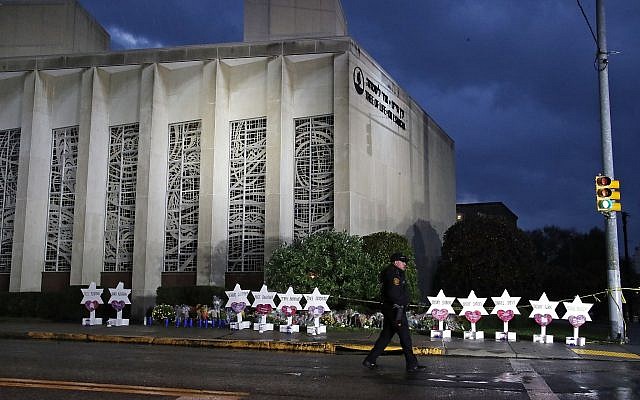By the Waters of Exile
This Sunday, Orthodox churches following the Byzantine rite begin using the service book called the Triodion (or in Slavic tradition, often the Penitential or Lenten Triodion). The Lenten Triodion provides the changing texts for the weeks of the Great Fast and Holy Week, as well as the four pre-lenten Sundays. This is why we begin using it this Sunday, four weeks before the beginning of this Great Forty Days, or Lent. This means that the following Sunday we will beginning singing the psalm that announces some of the great themes of our human condition — exile, bondage, alienation, grief, and even anger at the forces that have exiled, enslaved, and alienated us from our heart’s true home — communion with our creator.
That psalm is Psalm 136 (137 in the Hebrew numbering), the lament of a Judean over their exile in Babylon from Judea and its capital Jerusalem. “Despite the poignant beauty of the opening verses,” writes the New Jerome Biblical Commentary, “it contains some of the most vengeful language in all the Psalter.” That violent language often prompts horror when it is encountered in the modern world. In the reform of the Liturgy of the Hours in the post-Vatican II Roman rite, the final verses of this psalm have been suppressed, along with several other psalm verses with violent imagery. A choral group I sing with, the Archdiocesan Choir of the Archdiocese of Washington in the Orthodox Church in America, recently sang a setting of this psalm in concert, prompting my godson’s mother to ask about its meaning.
Christian tradition often sees multiple layers of meaning in scripture, sometimes called the “fourfold sense of scripture.” The first and most basic meaning is always the literal meaning of a passage. In Psalm 136(137), the literal meaning is the lament and desire for retribution. Here is the psalm in full as it appears in the Greek psalter:
Psalm 136 (137)
For David, a Psalm of Jeremiah.
By the waters of Babylon, there we sat down;
we sat down and wept when we remembered Sion.
We hung our harps on the willows in the midst of it.
For there our captors asked of us the words of a song; ?and they that had carried us away required of us a hymn,
saying, Sing us one of the songs of Sion. ?How should we sing the Lord’s song in a strange land?
If I forget you, O Jerusalem, let my right hand wither.
May my tongue cleave to my throat, if I do not remember you; ?if I do not prefer Jerusalem as my highest joy.
Remember, O Lord, the children of Edom in the day of Jerusalem;
who said, Raze it, raze it, even to its foundations.
Wretched daughter of Babylon!
Blessed shall he be who shall reward you as you have rewarded us.
Blessed shall he be who shall seize and dash your infants against the rock.
The psalm was written during the Judean exile in Babylon, so the emotions associated with all that the Judean community has seen in war are fresh and raw in the mind of the writer. The armies of Nebuchadnezzar II successfully laid siege to and conquered Jerusalem in 597 BCE, then deported many of the city’s inhabitants to Babylon and resettled them there — “By the waters [or rivers] of Babylon, there we sat down [or were settled] and wept when we remembered Sion [also Zion, one of the hills on which Jerusalem is built].”
The psalmist recalls being asked by their Babylonian captors to provide some entertainment with songs of their Judean homeland. It’s a taunt to an enslaved community, “Sing us a song of the home you watched us destroy while we abducted you.”
The psalmist mentions the Edomites, a neighboring nation which other scriptural writers identify as descendants of the Israelite patriarch Jacob’s brother Esau, and asks the Lord — in Hebrew, Adonai, spoken instead of the ineffable and sacred name of God, YHWH — to remember their cruelty when Jerusalem is someday again triumphant, “in the day of Jerusalem.” The writer may be thinking that the Babylonians are Edomites but could also be recalling the glee of their neighbors at the fall of Jerusalem at the hands of the Babylonians.
The last verses show us in graphic detail what the Judean people endured — a host of atrocities symbolized by the worst of them all, dashing their infants’ heads against stones and rocks. The psalmist seeks blessing on the one who will do exactly the same to the Babylonians. This is the literal meaning of the psalm; a hymn to God full of grief and rage in the midst of unimaginable pain. It is easy, in our own era in which new wars and new atrocities seem to emerge every day, to understand the perspective of this Judean psalmist and their community. On the level of the psalm’s literal meaning, it speaks to the grief and rage of anyone who has experience such horrors. And yet, the psalmist retains hope in the power of God to save their people.
However, Christian tradition has also perceived a spiritual meaning in this startling text, which is why the Byzantine Christian tradition continues to sing it in its entirety for its Sunday morning service of prayer in preparation for Lent: We live in exile. We have been spiritually alienated from the paradise for which we were created: communion with God, our creator. We have been enslaved to the forces of fear and hatred, but we retain a memory of our heart’s homeland.
The answer to this bondage is to smash the little thoughts of fear, hatred, greed, lust — all the little temptations to be my worst self, to give in to the forces of darkness in the world — before they grow up to be strong, powerful Babylonians who will enslave me. These little thoughts must be smashed against the rock — which Christian tradition identifies as the rock of Christ. Only such spiritual warfare allows us to return to our heart’s homeland: the embrace of the Father.




